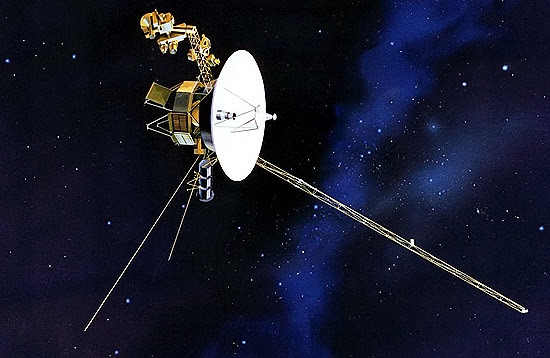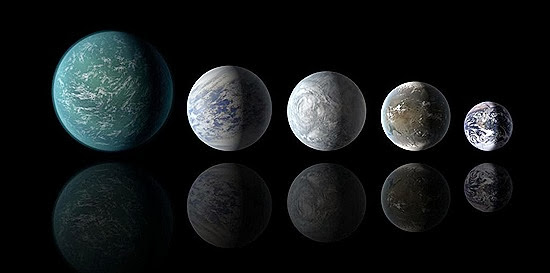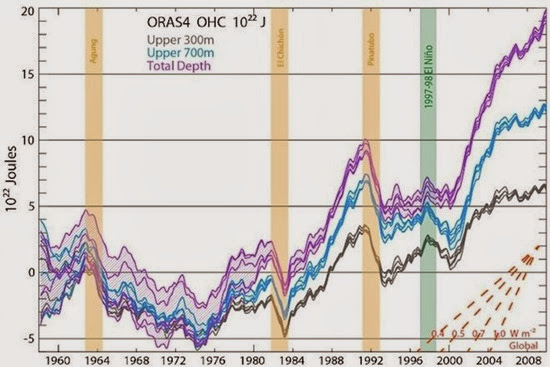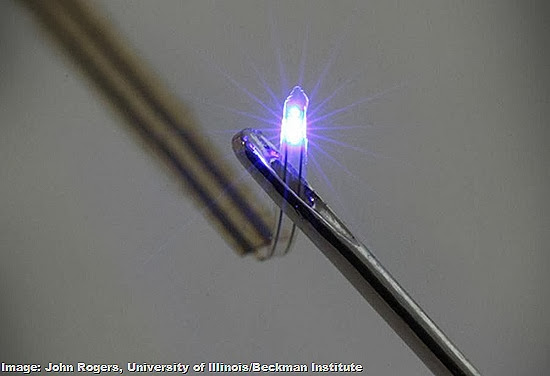
In terms of scientific discoveries, 2012 was a hard act to follow. This year didn't offer anything quite as dramatic as the long-awaited discovery of the Higgs boson or another rover landing safely on Mars, but it still had its share of highlights, from see-through brains, to electronic sensors designed to work inside the body, to puzzling revelations about dark matter. Here are our picks for the top discoveries, advances and other developments that shook up science this year.
1. Humankind goes interstellar
Image: NASA
It’s only taken 36 years but, after a couple false starts, NASA finally declared that their Voyager 1 spacecraft had gone interstellar. Tell-tale measurements from the probe revealed that it had slipped out from the area where the sun’s electromagnetic influence reigns and tasted the space between stars. Not bad for a piece of vintage '70s hardware with only enough memory on-board to hold an average-size JPEG file.
Next stop: the Oort Cloud, which represents the edge of the sun’s gravitational influence and the end of the solar system. But don't hold your breath. It's going to take about 30,000 years to get there.
2. Genome editing
In January, two research teams announced a fast and precise new method for editing snippets of the genetic code. The so-called CRISPR system takes advantage of a defense strategy used by bacteria. The bacteria use RNA to identify foreign DNA and enzymes to chop it up. The scientists repurposed this system so that the RNA seeks out a specific sequence of DNA - a disease-causing gene mutation, for example - and the enzymes edit the genetic code to fix the mutation.
The strategy has already spawned start-up companies and impressive venture capital investment. Of course, gene therapy has raised our hopes before only to crush them, and it's too early to say if this time will be any different.
3. Billions and billions of Earths
Image: NASA Ames/JPL-Caltech
There’s no place like home? Well actually, according to scientists there are about 10 billion places like home in the Milky Way galaxy alone.
Data from NASA’s Kepler space telescope - which hunts for exoplanets but unfortunately suffered a crippling hardware failure this year - allowed astronomers to estimate the number of alien worlds that orbit sun-like stars at just the right distance for liquid water - and perhaps life - to exist. They calculate that about one in five of the 50 billion sun-like stars in our galaxy should have an exoplanet where the temperatures are balmy and nice.
4. Global warming: a cause for the pause
Image: NASA Earth Observatory
After decades of intensifying warming, the rise in Earth's surface temperatures has slowed since the late 1990s - a seemingly mysterious pause used by climate science sceptics to argue that global warming isn't real.
But the mystery had a simple answer: the warming didn't go away. Instead, researchers found that much of it took place in deep oceans, which are now warming 15 times faster than in the previous 10,000 years. (An equatorial Pacific cooling trend also appears to have offset planetary warming trends, but it's expected to end soon.) The pause, it seems, is only a blip.
5. See-through brains
The stunning image above shows nerve fibres crisscrossing the brain of a mouse. In April, researchers at Stanford University described a series of chemical treatments that make brain tissue almost completely transparent. Scientists can then use any number of fluorescent labels to highlight neurotransmitters and other important chemicals, or, as they've done here, trace the long skinny axons that send information from one part of the brain to another.
The technique works in human tissue too, which bodes well for using it to study what goes wrong in everything from autism to Alzheimer's disease in unprecedented cellular detail. It's just the kind of tool that the new federal BRAIN Initiative announced this year hopes will usher in a fresh round of discoveries about how the brain works.
6. Intergalactic Neutrinos
Image: Sven Lidstrom. IceCube/NSF
IceCube is a 1-cubic-kilometre-size telescope sitting under the ice at the South Pole. Its quarry? Neutrinos. After searching for these elusive and nearly undetectable particles for three years, IceCube finally reported the findings it was built to discover: neutrinos streaming in from outside our galaxy.
Though scientists have detected neutrinos created by particle interactions in our atmosphere and those coming from the sun, they had yet to see neutrinos that originate from some of the most powerful and violent explosions in the universe. These phenomena, known as active galactic nuclei and gamma-ray bursts, are fuelled by enormous black holes and collapsing stars but researchers are at a loss to explain exactly how they work. By capturing their neutrinos, IceCube may help researchers unravel these cosmic mysteries.
7. A new meat-eating mammal
It's not every day that a new species of carnivorous mammal is discovered in the Americas. It's not even every year or every decade. In fact, the olinguito, above, is the first new such species described in 35 years. Scientists had wondered why this furry red creature didn't seem to breed with others of its kind in the Andean cloud forests where it lives. This year they found out: Anatomical and DNA tests established that the olinguito is a distinct species.
8. Pesticide controversy grows
For the last several years, controversy over neonicotinoids - the world's most widely used class of pesticide - focused almost entirely on links to massive honeybee die-offs across the United States and Europe. Effects on other animals received little attention; even the European Union's high-profile neonicotinoid restrictions ignored their use on non-flowering crops, in nurseries and in urban areas.
That's starting to change. This year researchers challenged the notion that neonicotinoids are mostly harmless to vertebrates, including humans, and linked neonicotinoid levels in Dutch surface waters to nationwide declines in stream-dwelling insects and crustaceans. The controversy isn't just about honeybees anymore.
9. Making organs from stem cells
This year scientists announced several big steps towards engineering functioning organs from stem cells. The colourful blob above is a mini brain created from stem cells derived from reprogrammed human skin cells. By providing just the right chemical environment, European scientists coaxed the stem cells to become neurons and arrange themselves into different structures that crudely resemble the anatomy of a developing foetal brain. The researchers are using these methods to study what goes wrong in developmental brain disorders like microcephaly, using stem cells from individual patients.
Meanwhile, researchers in Japan developed functional human liver tissue from reprogrammed skin cells and several teams reported progress on developing kidney tissue. The road to creating transplantable tissues from stem cells is still long, but these are encouraging steps.
10. Implantable electronics
Forget wearable electronics - 2013 was a banner year for electronics designed to work from inside the body. Scientists developed biodegradable circuits that could one day destroy microbes with heat to help heal a wound and dissolve after they've done their jobs. They invented flexible electronic tattoos that could be loaded with enough sensors to make your FitBit seem like a clunky piece of junk. And now we have tiny LED probes and a stretchy foil made of gold nanoparticles that can measure and manipulate the brain. Your cyborg future just got a little closer.
11. Dark matter shows up - or doesn't
It’s been an uneven year for dark matter researchers. In April, a major experiment named AMS on the International Space Station saw hints of what could be dark matter particles annihilating one another in the centre of the galaxy. The results, though tantalizing, were inconclusive and many other things could be mimicking such a signal.
Then, in October, another experiment named LUX (above) declared that it had not found a single dark matter particle running through its detector. The findings agreed with a few other experiments (which have similarly seen no dark matter) but also directly contradicted several experiments that had seen potential dark matter traces. One of these latter teams released results just two months after LUX showing a signal that could be dark matter. Until someone can explain all these contradictory results, the field seems likely to remain divided and perplexed.
12. Fears of the fathers
It's not uncommon for a scientific study to raise more questions than it answers. A fascinating example of this is a study published earlier this month that found that mice can pass a fearful memory down to their offspring - and even the next generation after that. Mice in these later generations froze in fear when they caught a whiff of a certain smell that their fathers (or grandfathers) had learned to associate with an electric shock. Additional experiments showed the same effect when Mom was the one with the scary experience.
The researchers made sure the younger mice had never experienced the smell themselves until it was time to test them, and even mice born through in vitro fertilization who never met their fathers had the fearful memory, seemingly ruling out the possibility that they somehow picked it up from Dad.
The study has spurred an animated debate about how this could happen. The brains of fearful progeny contained more neurons with receptors for the scary smell, the scientists found. They suggest that epigenetic changes - that is, chemical changes to DNA that alter the way genes work - could account for the persistence of memory through the generations. But how such changes could transfer from the brain, where the memory forms, to the sperm and eggs that create the next generation, remains - at least for now - a haunting mystery.













No comments:
Post a Comment
Please adhere to proper blog etiquette when posting your comments. This blog owner will exercise his absolution discretion in allowing or rejecting any comments that are deemed seditious, defamatory, libelous, racist, vulgar, insulting, and other remarks that exhibit similar characteristics. If you insist on using anonymous comments, please write your name or other IDs at the end of your message.